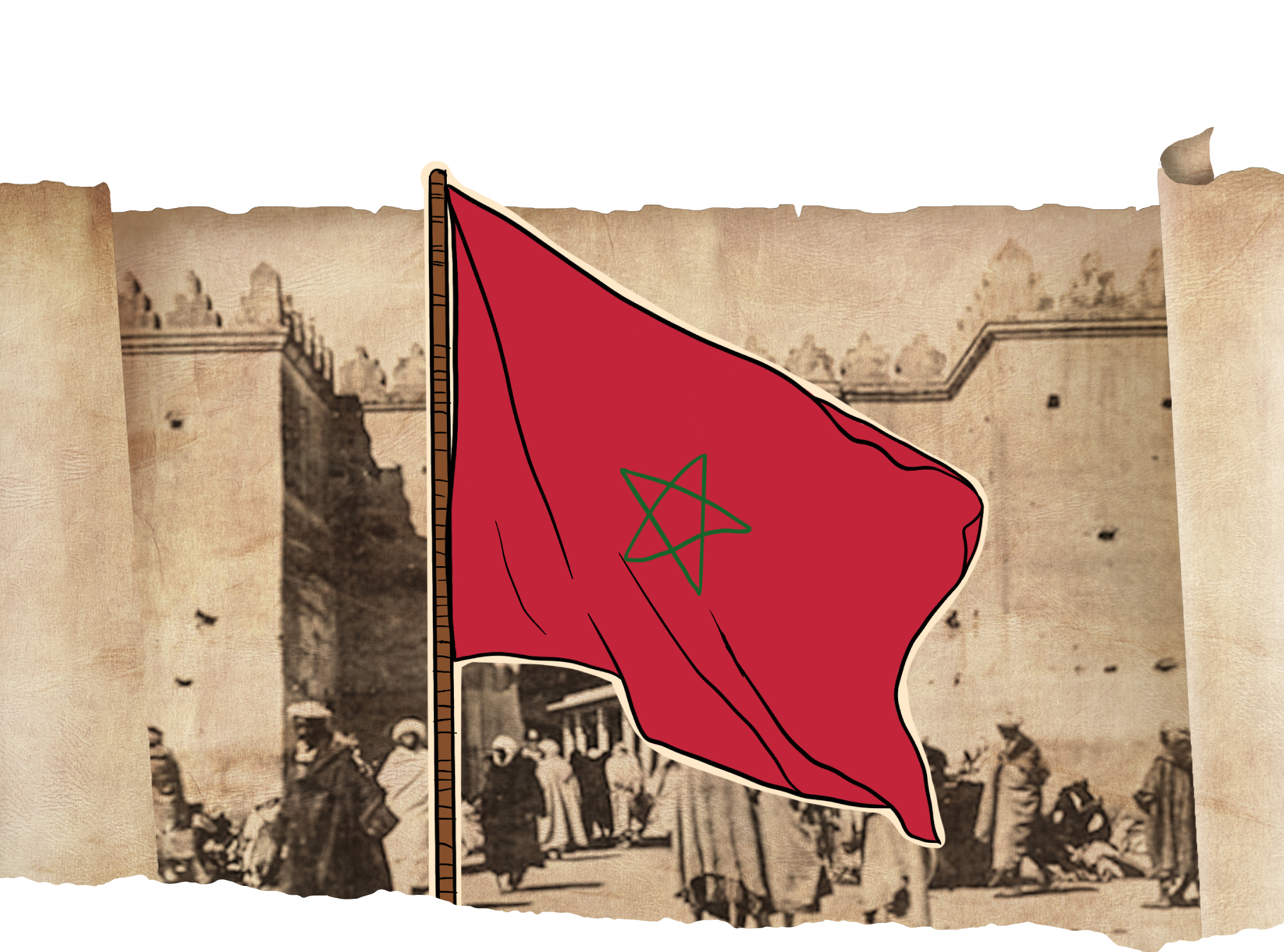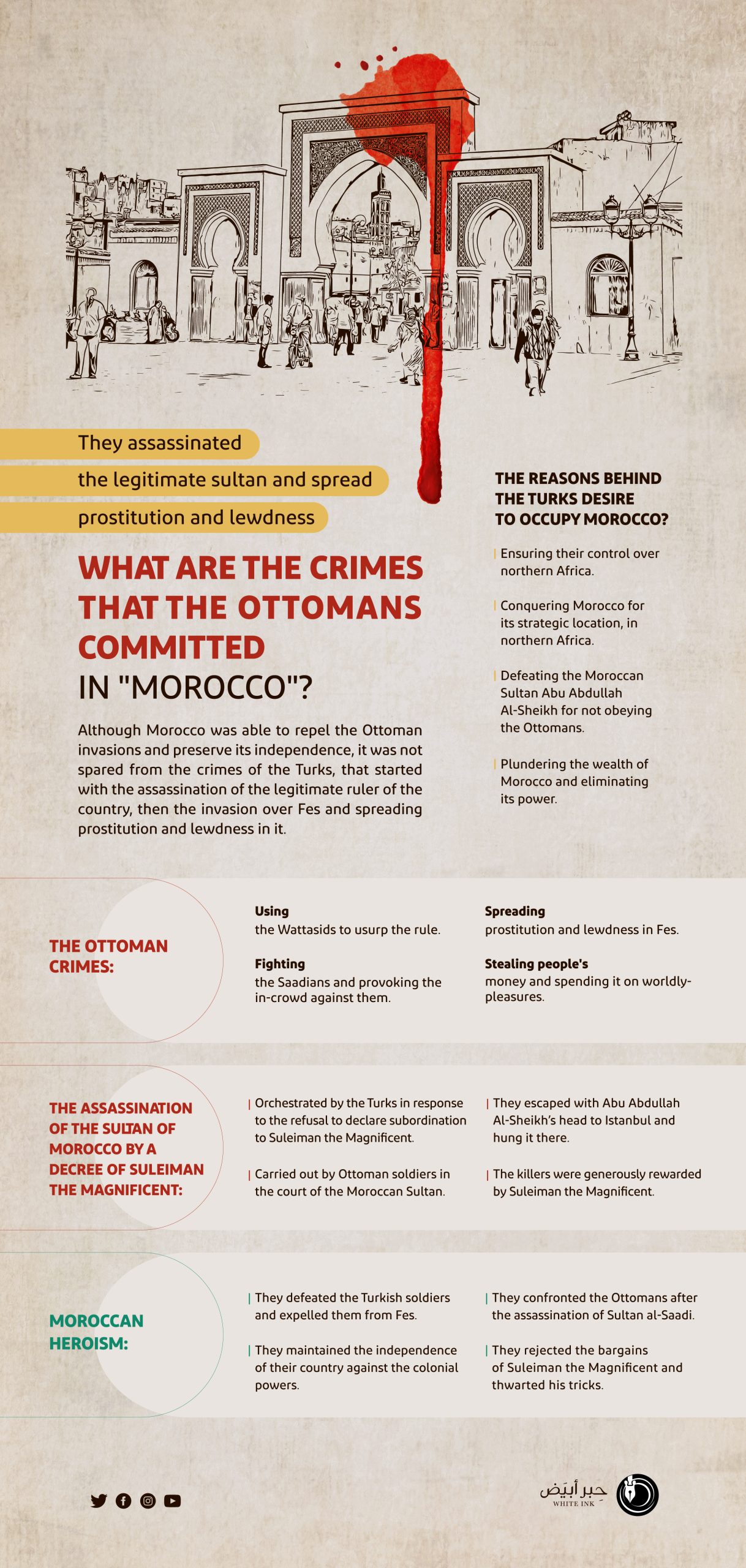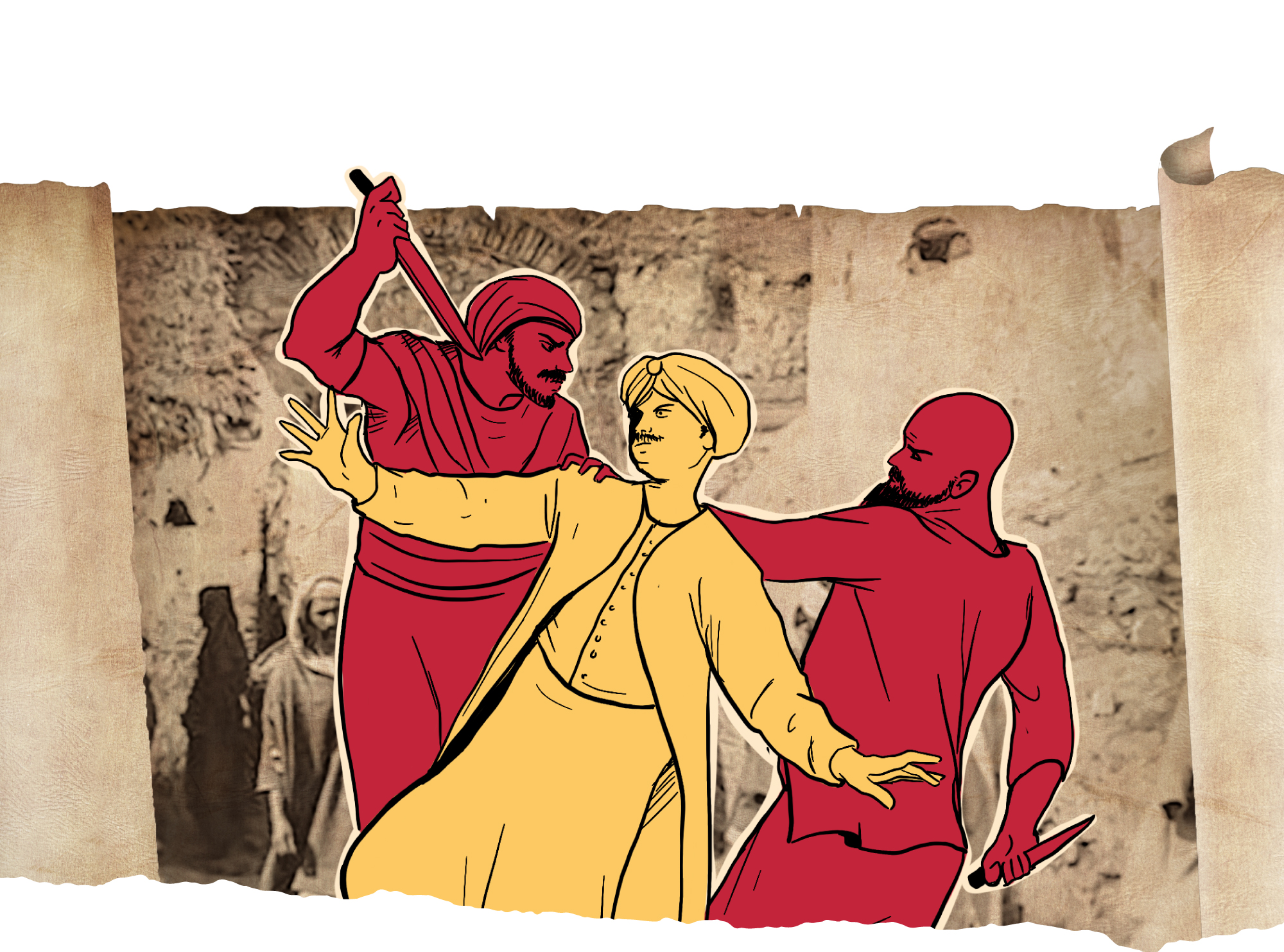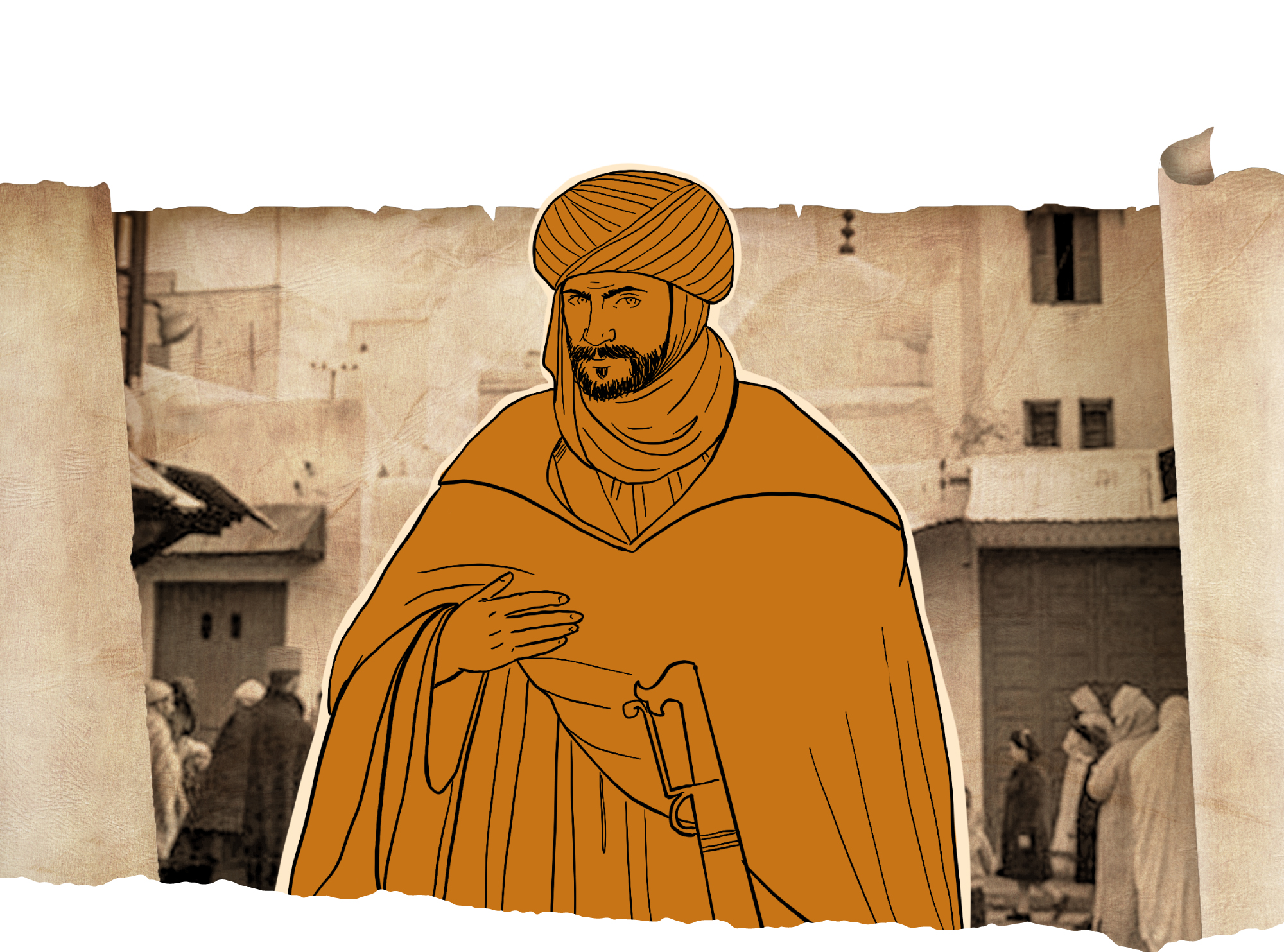
The Ottomans wanted to occupy it and demanded that its sultan shall declare allegiance to them
Morocco was a thorn in the Turkish sultans' side
The countries were successively collapsing, the earth was watered with blood, the beacons of knowledge were closed and the lamps of knowledge were extinguished. All this was due to the Ottoman occupier who did all kinds of evil in the Arab world and did not calm down until after fighting the Arabs everywhere. Therefore, as soon as the matter settled in Algeria, Tunisia and Libya, their eyes began to turn to Morocco.
Historical documents indicate that the Turks’ view of Morocco came as part of a plan to fully control North Africa, and from here a clash with the Saadians who ruled there was imminent. As usual, the Othman family used mercenaries and people of unknown parentage to support them and arouse strife against the legitimate authorities. They sought the help of Abu Hassoun Al-Wattasi, who was in Algeria. They provided him with the necessary strength to fight the Saadians and to return the Wattasid State, the enemy of the Saadi State in Morocco, under Ottoman sovereignty.
The plan of the Turks succeeded in the beginning, and Al-Wattisi was able to reach Fez before fighting Sultan Abu Abdullah Al-Saadi, who was able to eliminate the strife, defeat Al-Wattasi, and restore Fez again. The Ottomans did not stop there and sent a message from Istanbul to Sultan Al-Saadi asking him to mention the Ottoman Sultan on the pulpits as the legitimate ruler in the Islamic countries and to mint the name of the Ottoman Sultan on currency in Morocco. These were the signs of subordination and loyalty, but the Moroccan Sultan refused to obey.
Since tyrants and criminals do not accept the rejection of their desires, this aroused the anger of the Ottoman Sultan Suleiman I, so he plotted a conspiracy through some Turkish soldiers who claimed to have escaped from the Ottoman army, and asked for protection and joining the army of Morocco. Indeed, the Moroccan Sultan Abu Abdullah Al-Sheikh trusted them, but they quickly assassinated him, cut off his head and fled to Istanbul, where the Ottoman Sultan ordered it to be hung on the doors for joy.
The attempts of the Ottomans did not stop there, as Hassan Khair Al-Din Pasha, the ruler of Tlemcen, moved with a large army in an attempt to invade Morocco. He reached the outskirts of Fez, where he met the Moroccan army, and the battle took place, which resulted in the defeat of the Ottoman army and its escape.
The Ottoman governors in Algeria tried to win the affection of some members of the Saadian family to cause sedition within the ruling family, so that some of the outlaws of the Saadian family went to Istanbul, asking for its intervention in their favor against the ruling class of the Saadian family. Of course, the Ottomans seized this opportunity to legitimize their ambitions in Morocco.
In 1578, the famous battle “Wadi Al-Makhazin” took place between the Moroccan army and the Portuguese army, which wanted to invade Morocco, but the Moroccans managed to inflict a severe defeat on the Portuguese. This battle supported the independence of Morocco and led to the reluctance of all the major countries, including the Ottoman Empire, to take any hostile step towards Morocco.
Nevertheless, the Ottoman-Moroccan relations quickly became tense again. Historians mention many reasons for this, and perhaps the most important reason was the recommendation of Aruj Pasha to the Ottoman Sultan. Aruj had great experience with the conditions of North Africa and he did not forget that the coasts of Morocco had not yet fallen under the rule of the Ottomans. Accordingly, he sailed from Istanbul at the head of a large fleet in order to occupy the Moroccan ports, but the Moroccan Sultan resorted to diplomacy to resolve the dispute and sent a delegation to Istanbul. This delegation was able to calm things down and thwarted the plan to control Morocco.
The Moroccan army was able to repel the invasions of the Ottomans and the Portuguese, and Morocco remained the only country in North Africa that did not submit to the Turks.

With the collapse of the Saadi state and the rise of the Alawite state in Morocco, the Ottoman garrison in Algeria tried to intervene more than once in the affairs of Morocco, but the Alawites were able to preserve Morocco’s independence. Indeed, Morocco remained the only Arab country in North Africa that the Ottoman Empire could not occupy.


- Salah Al-Akkad, The Maghreb, 6th edition (Cairo: The Anglo Egyptian Bookshop, 1966).
- Shawki Al-Gamal, The Great Maghreb (Cairo: The Anglo Bookshop, 1977).
- Mahmoud Amer and Muhammad Faris, The Modern History of the Maghreb (The far Maghreb, Libya) (Damascus: Damascus University, 2000).


They plotted his assassination and hung his head in Istanbul
The Ottomans killed the Sultan of Morocco with treachery
Some countries pay the tax for their privileged location, where the invaders from all sides and the criminals of history covet them. This is what happened with the Maghreb, which is the closest point to the western Europe, along with its long coasts on the Atlantic Ocean.
Because of this, the attention of the Portuguese and the Spaniards turned to it and worked to occupy a number of centers on its coasts since the beginning of the sixteenth century AD, taking advantage of the poor internal conditions and the weakness of the central authority in Fez and its inability to defend its political entity, which led to a state of fragmentation.
During that stage, the Saadian call spread, which began to expand in Morocco, and its leaders appeared to be the liberators of the Moroccan coasts from foreign occupation. Prior to 1549, the Saadians had taken control of Morocco, and at the same time the Turks were controlling Tlemcen in Algeria, so there was a direct line between the Saadians and the Turks.
Historical documents indicate that the Saadian Sultan Abu Abdullah Al-Sheikh was wary of the Turks because he was aware of their criminality. The Moroccan historian Al-Nasiri Al-Salawi says: “Abu Abdullah Al-Saadi was sad because of the Turks’ takeover of the central Maghreb (Algeria), despite being foreigners and intruders”.
What increased this hostility was that Abu Hassoun Al-Wattisi, the enemy of Sultan Al-Saadi, fled to the Turks, who worked to exploit him. In 1554, Abu Hassoun, with the ruler of Algeria, Saleh Pasha, managed to defeat Abu Abdullah Al-Sheikh and expel him from Fez, but the Saadian Sultan quickly responded by mobilizing the tribes and re-crawling, so severe wars took place that ended with the victory of Abu Abdullah Al-Sheikh, his recovery of Fez and his control over Morocco after that.
Historical documents reveal Abu Abdullah Al-Sheikh’s contempt for the Ottoman Sultan Suleiman I. He called him the Sultan of the Boats, in reference to the boat pirates. On the other hand, the Saadian Sultan was able to confront strongly and proudly the ambitions of the Ottoman Empire and adhered to the independence and freedom of his country. Since the Turks did not know the meanings of chivalry and honor, they resorted, as usual, to treachery and murder. Assassinations were the policy of the Othman family against all who opposed them.
Sultan Abu Abdullah Al-Sheikh was able to deter the Ottomans with strength and pride, and to confront their aggression against Morocco.

When the Ottoman Sultan Suleiman I received the news of the collapse of his allies from Banu Wattas and the Saadian control of Morocco, he tried to win the latter to his side first, so he wrote a letter to Abu Abdullah Al-Sheikh congratulating him on the authority, and asking him to mention him on the pulpits of Morocco and sent a messenger with that. When Sultan Al-Saadi read his letter, he became very angry and brought the Turkish messenger. When the messenger asked him to reply, he said: “I have no answer for you until I arrive in Egypt, If Allah wishes, and then I will write to the Sultan of the Boats”. The Messenger left him and was terrified until he reached his sultan.
The Moroccan historian Al-Nasiri Al-Salawi says: “When the messenger of Sultan Suleiman left Sultan Abu Abdullah Al-Sheikh and arrived in Algeria, he reached Constantinople by sea and met with the Grand Vizier. He told him what he had from the Sultan of Morocco. The Grand Vizier informed Sultan Suleiman of this, so the Sultan ordered him to prepare the soldiers for the invasion of Morocco. The people of the court met and agreed to appoint 12 strongmen from the Turks, give them 12,000 dinars and send a letter with them to Saleh Al-Kahiya, a Turkish leader who joined the soldiers of the Saadian Sultan Al-after the defeat of Bani Wattas. They promised him money and position if he assassinated the sheikh and brought his head”.
Al-Nasiri continues: “The designated group headed to Algeria by sea. When they arrived, they bought mules and headed to Fez in the form of merchants. They used them to show their reasons. After that, they headed to Marrakesh. When they met with Saleh Al-Kahiya, he hosted them and planned for what they said”.
The Moroccan historian adds: “Those Turks showed to Sultan Abu Abdullah Al-Sheikh that they fled from Sultan Suleiman and wanted to serve the Sheikh and take refuge in him from those who pursued them. Then Saleh Al-Kahiya entered and said: My Lord, a group of notables from the Army of Algeria heard of our standing with you and our proximity to you, so they desired to be near you and serve you. There is no one above them from the Army of Algeria, and they, If Allah wishes, will be the reason for your control over it. He ordered him to bring them. When they came, he saw beautiful faces and great bodies. Saleh translated their words for him in a manner full of love, advice and diligence in obedience and service until the sheikh thought that he had taken possession of Algeria, so he commanded him to bestow on them and to give them horses and weapons. He told him to bring them whenever he entered. They used to go to him every morning to kiss his hand, as the Turks do.
The Saadi Sultan was deceived in this way and began to send the Turks to the elders of Souss to gain insight into the country and know the people. He commanded them to treat them well and to give them good hospitality. The situation continued until they had the opportunity while he was in some of his movements on the mountains of Dern, so they struck his neck, carried his head and took several paths. They reached Algeria and from there to Istanbul. They brought the head to the Grand Vizier, who brought it to Sultan Suleiman. The Sultan ordered it to be put in a copper net and hung over the castle’s door. The truth is that after the news of the assassination of Sultan Al-Saadi was confirmed, the confidence of the people of Morocco was not shaken, and this did not affect their insistence on upholding freedom and independence against any foreign occupier, whoever he was.


- Bjoy Ibrahim Effendi, History of Bjoy Ibrahim Effendi, translated by: Nasser Abdel Rahim Hussein (Cairo: The National Center for Translation, 2015).
- Jamal Al-Din Al-Ramadi, “Lights on the Political History and Economic Situation of Morocco” (Cairo: Contemporary Egypt’s Magazine, Vol. 58, No. 327, 1967).
- Abdel Karim Karim, Morocco in the era of the Saadian state, 3rd edition (Rabat: Publications of the Association of Moroccan Historians, 2006).
- Muhammad Suhail Taqqoosh, History of the Ottomans from the Establishment of the State to the Coup against the Caliphate, 2nd Edition (Beirut: Dar Al-Nafa’es for Printing, Publishing and Distribution, 2008).

They oppressed the people and desecrate the city
The Ottoman crimes in Fez
Each country has a trail and signs from which you can conclude the events that have passed here. When you find that the land was watered with the blood of innocents, prisons were filled with the oppressed, civilizations were demolished and mosques were desecrated, you know that the Turks were here. Those are their habits, character and creed.
The Turks passed through the Moroccan Fez, but before exposing their crimes, it must be said that Morocco is the only political entity in North Africa that did not submit to the Othman family, although it remained a constant strategic goal in the expansionist agenda of the Turks. This Moroccan exception is based on the presence of the Moroccan nation, which is distinct in behavior, heritage and civilization.
As usual, the Turks watched the internal political situation in Morocco, waiting for circumstances that would prompt them to intervene, such as splits at the level of political authority or the presence of a popular mobilization demanding to unite under the banner of the Ottoman Empire. The Turkish state specifically chose the latter to be active in by trying to lure many jurists to its side and turn them into a fifth column that would promote the agendas of the Ottoman Sublime Porte in Morocco.
In this context, the Turks supported Abu Hassoun Al-Wattisi to fight the Saadian state, so they entered the city of Fez in 1554. Immediately after their occupation of the city, they practiced all kinds of corruption and oppression, and manifestations of immorality spread among them. They reached the point of attempting to overthrow the Wattasid Sultan himself. This is what Abd Al-Rahim Benhada, the investigator of the book of “The History of the Saadian-Tekmdartian State”, dealt with by saying: “When the Turks saw the beauties of the country, they liked it and took the decision. They wrote that desire and sent it to Algeria and wanted to overthrow Abu Hassoun. He gave them the freedom to do anything and they did what they wanted in the city. They arrested women and boys and looted what they wanted. People were fed up with their misdeeds”.
As soon as the Turks occupied the city of Fez, they spread corruption and immorality and brutalized the people, especially women and children.

Prince Abu Hassoun found himself in a difficult situation, so he chose political independence and not to refer to the Turks in matters of governance, so they arrested and imprisoned him. This led to a reverse reaction among the residents of Fez, who declared rebellion against the Turks and attacked them to liberate their prince.
At the city walls, one of the sheikhs, called Al-Saghi, gave a speech, saying: “Give us the sultan if he is alive and you will be safe and then go back to your country. If he is dead, see if there is anyone you can call upon to save you from us”. Regarding this threat, the only solution for the Turks was to release the Wattasid prince and return to Algeria after taking the money he promised them of. They left Morocco after leaving painful memories that are still remembered in the history books that dealt with the entry of the Ottomans into the capital of Morocco at that time.
After that, Sultan Abu Abdullah Al-Sheikh succeeded in recapturing the city of Fez after a fierce battle in which Abu Hassoun Al-Wattisi was killed, after which he resolved to expel the Turks from North Africa. History books narrate his saying: “I must conquer Egypt and expel the Turks from it”. The Ottoman Sultan was called “Sultan of the Whalers” in reference to his work with pirates and thieves.
The Ottoman Sultan Suleiman I continued to send delegations to persuade Sultan Al-Saadi to recognize him as the Commander of the Faithful, to mention him on the pulpits as the legitimate ruler in the Islamic countries, and to mint coins in his name, but Abu Abdullah Al-Sheikh categorically refused. He replied to the Messenger of Suleiman I in a harsh manner, in which he said: “I have no answer for you until I arrive in Egypt, If Allah wishes, and then I will write to the Sultan of the Boats”.
After this strong response, the Ottomans worked to mobilize the assassination battalion located in Algeria and plan the assassination of the Moroccan Sultan on the orders of Suleiman I, who requested that they would bring him the head of Sultan Al-Saadi. The Moroccan historian Al-Ifrani tells us the events of the assassination of the Moroccan Sultan saying: “They sent ( refer to the Turks of Algeria) a man of their heroes called Saleh Al-Kahiya in a group of their soldiers, telling the Saadian Sultan Muhammad Al-Sheikh that they fled from the Ottomans and wanted to serve him and take refuge in him from those who pursued them. Their intention was to plot and assassinate him wherever possible”.
After the corrupt Turks gained the confidence of the Saadian Sultan Abu Abdullah, they took advantage of his departure to the mountains of Dern to carry out their crime in a hideous method that is not different from the methods used by terrorist organizations. They struck his head with a cleaver, cut it off, sent it to Constantinople and hung it on one of its doors. The head of the Sultan remained hanging until it vanished due to the successive climatic factors. As for the rest of his body, it was carried to Marrakesh, where he was buried.


- Muhammad Al-Saghir Al-Ifrani, Nuzha Al-Hadi in the news of the first century’s kings, investigated by: Abdellatif Al-Shazly (France: Angie Press, 1888).
- Unknown author, The History of the Saadian-Tekmdartian State, investigated by: Abd Al-Rahim Benhada (Marrakesh: Dar Al-Maqalat, 1994).
- Abu Al-Abbas Shihab Al-Din Al-Derei Al-Salawi, Investigation of the News of the Far Maghreb Countries (Beirut: Dar Al-kotb Al-Ilmaya).





